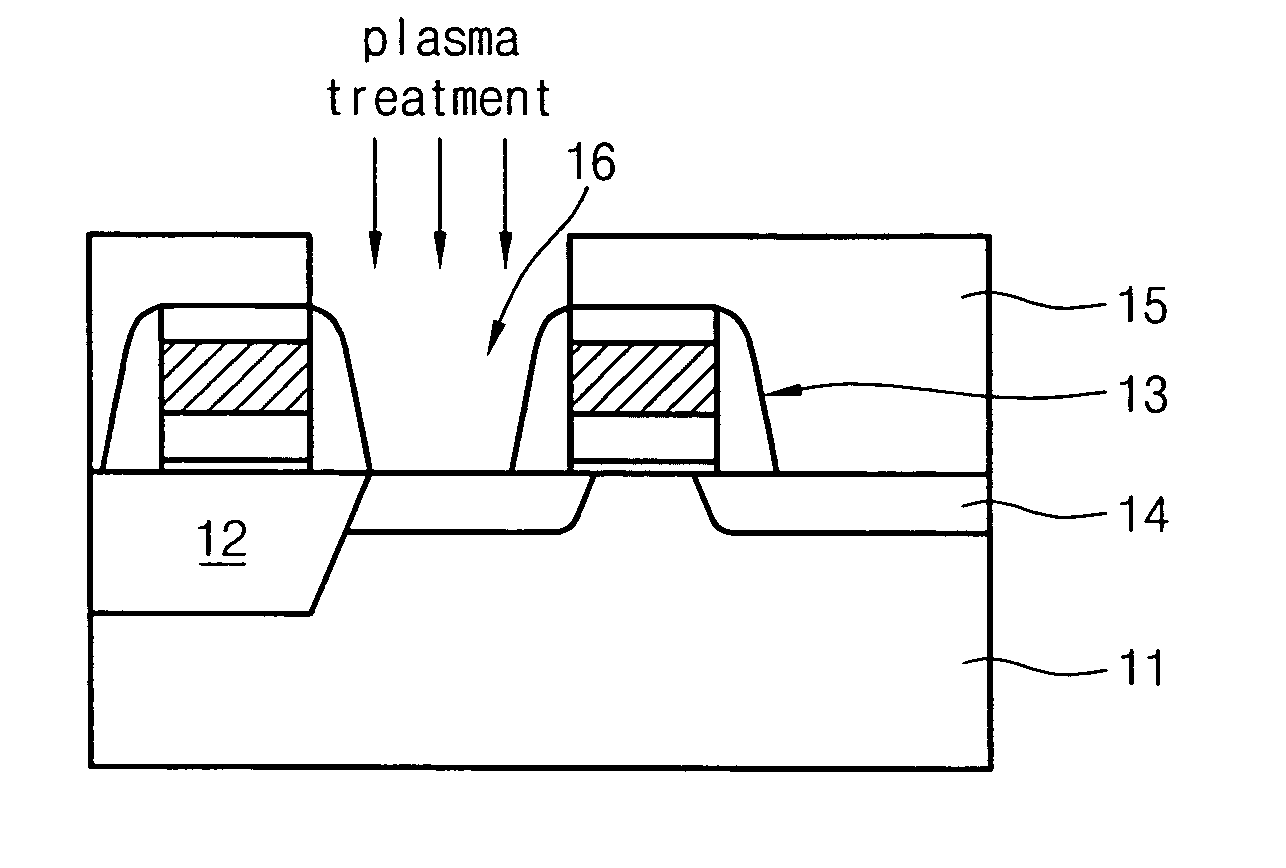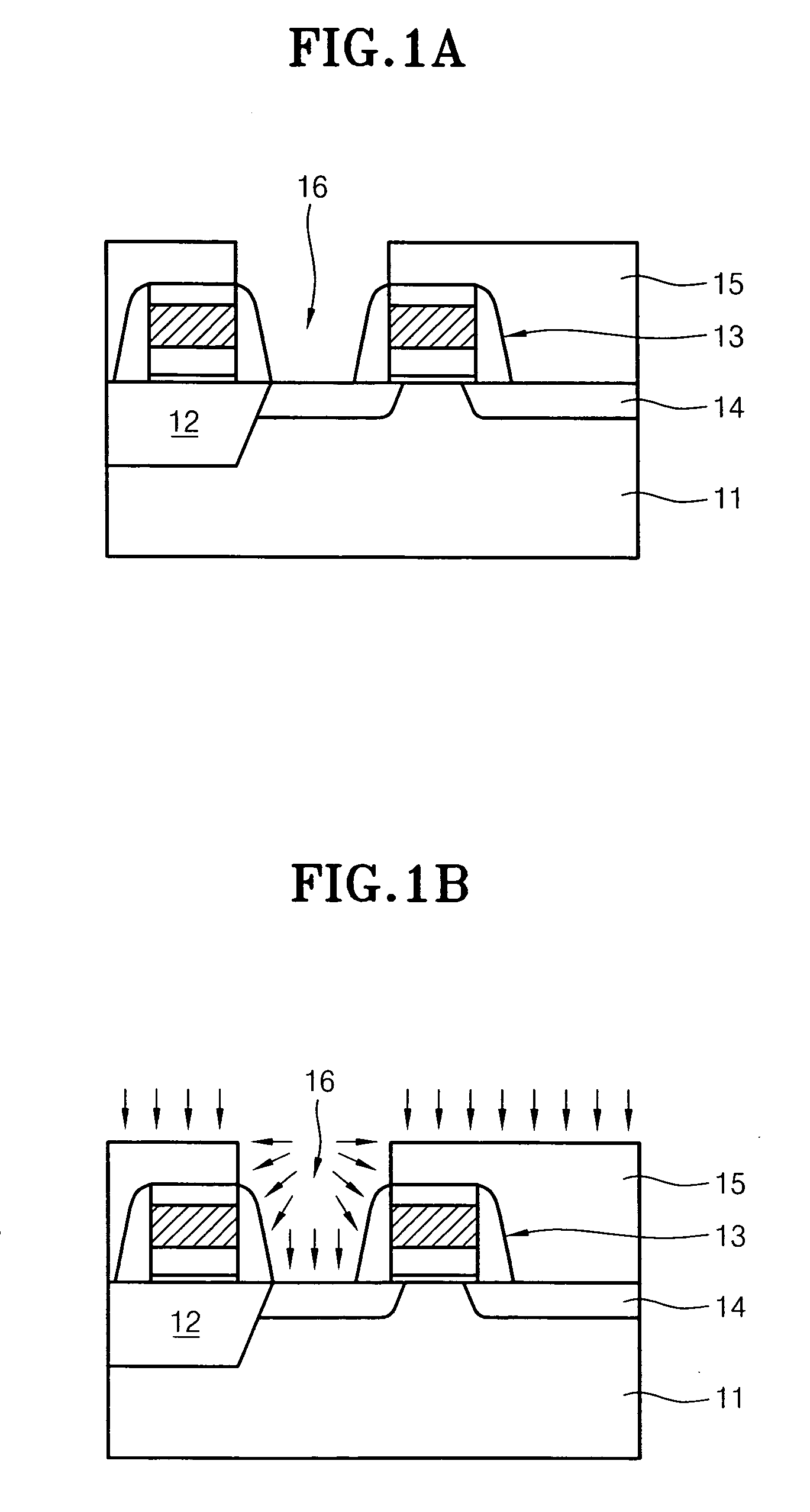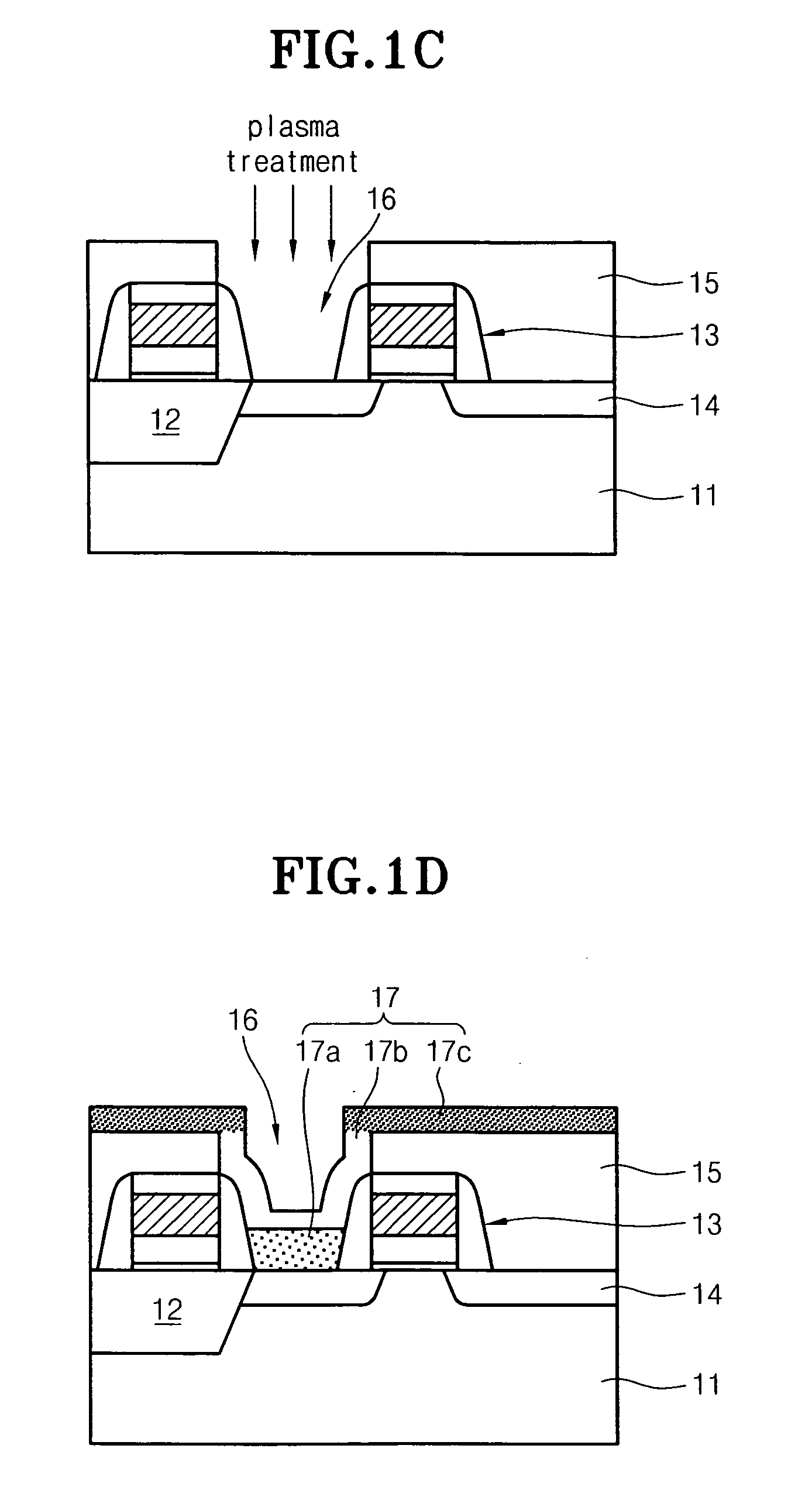Method of forming a contact plug in a semiconductor device
- Summary
- Abstract
- Description
- Claims
- Application Information
AI Technical Summary
Benefits of technology
Problems solved by technology
Method used
Image
Examples
Embodiment Construction
[0018] Generally, epitaxial silicon is used to make a contact plug in a semiconductor memory device to obtain a low contact resistance at a relatively low doping density. The lowered doping density allows small dopant diffusion.
[0019] According to an embodiment of the present invention, a hydrogen heat-treatment process, which is the conventional pre-treatment process requiring high temperature condition above 800° C., is replaced with a plasma treatment process requiring lower temperature condition, about 600° C. or lower. This lowers the thermal budget during the pre-treatment process and help to prevebt the device characteristic degradation.
[0020] Further according to an embodiment of the present invention particularly with respect to the SPE method of growing the epitaxial silicon, the amorphous silicon is deposited on the wafer in multiple deposition steps, i.e., at least more than two steps. A subsequent heat-treatment process allows the deposited amorphous silicon to be gro...
PUM
 Login to View More
Login to View More Abstract
Description
Claims
Application Information
 Login to View More
Login to View More - R&D
- Intellectual Property
- Life Sciences
- Materials
- Tech Scout
- Unparalleled Data Quality
- Higher Quality Content
- 60% Fewer Hallucinations
Browse by: Latest US Patents, China's latest patents, Technical Efficacy Thesaurus, Application Domain, Technology Topic, Popular Technical Reports.
© 2025 PatSnap. All rights reserved.Legal|Privacy policy|Modern Slavery Act Transparency Statement|Sitemap|About US| Contact US: help@patsnap.com



